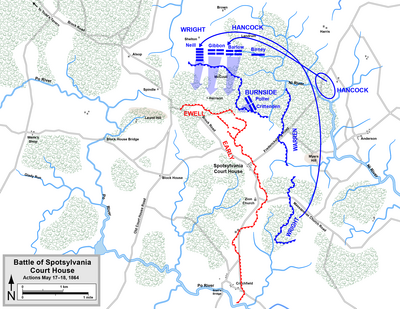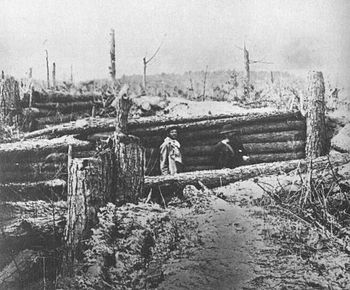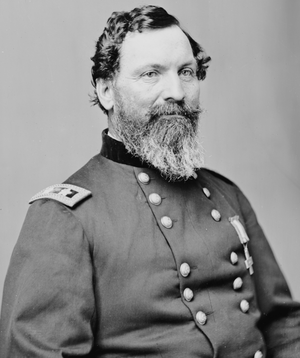Having decided to
move to Spotsylvania, Grant's men continued to march in that
direction on the night of May 7th. At the front Sheridan's
cavalry had to clear the road of Confederate cavalry. Lee was not
certain where Grant was going, but ordered Richard Anderson, who had
taken over Longstreet's corps, to move in the direction of
Spotsylvania. He did not tell him the movement was urgent, but
Anderson moved early, at 10 pm on May 7th, to escape the
stinking bodies and burning forest on the Wilderness battlefield.

Early
on May 8th,
150 years ago today, the Federal cavalry renewed their efforts to
clear the road to Spotsylvania. Fitzhugh Lee's men, after a gallant
stand, withdrew from their barricades and took up a new position on
Laurel Hill, just northwest of Spotsylvania. He sent for
Anderson to help, and
at
this point the Confederates' early movement paid off. Before long
infantry were flying into the cavalry positions, just as Warren's V
Corps arrived to attack. Warren did not know that the Confederates
had infantry on the field, and ordered his troops to press forward.
The men were tired and hungry from their long march, but Warren
shouted, “Never mind the cannon! Never mind the
bullets! Press on and clear this road! It’s the only way to get
your rations!" The Federals charged, but at 60 yards the
Confederates unleashed volley after volley. The bluecoats fell back
and tried again, but again they were beaten back. Warren, seeing more
Confederate infantry arriving, halted his attacks and told Meade of
the situation.
 |
| Lines at Spotsylvania |
Meade could not believe that
the Confederates had arrived on the field so soon. He ordered John
Sedgwick to join Warren and continue the attacks. Much time was spent
in preparing the lines, and by the time they advanced at 6 pm,
Ewell's Corps had joined Anderson's on the battlefield. The Federal
assault was a disaster. Orders were confused, units lost their way,
and only one division and one brigade ended up attacking. This weak
force had no chance of breaking the Confederate line, and the
Federals were soon broken.
They day had been a
provident success for the Southerners. The Federal movement had been
detected, and infantry was on hand to meet it. They had won the race
for Spotsylvaia, and the attack which the Union had spent so long
planning turned out to be an embarrassing failure.











.png/450px-Battle_of_Spottsylvania_(1).png)















